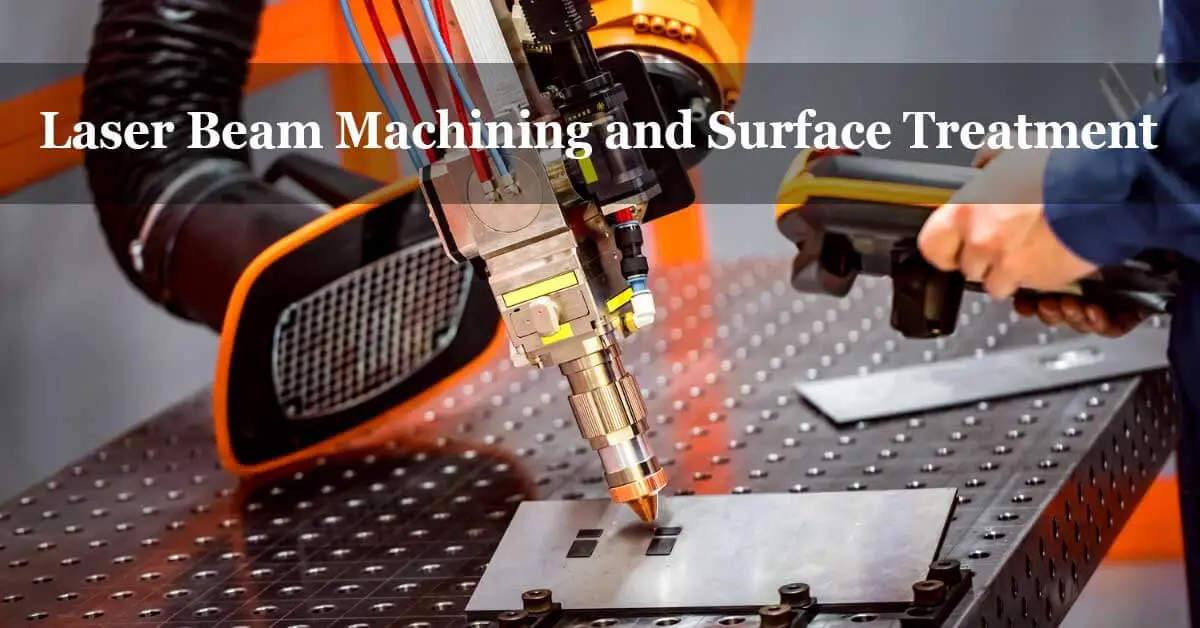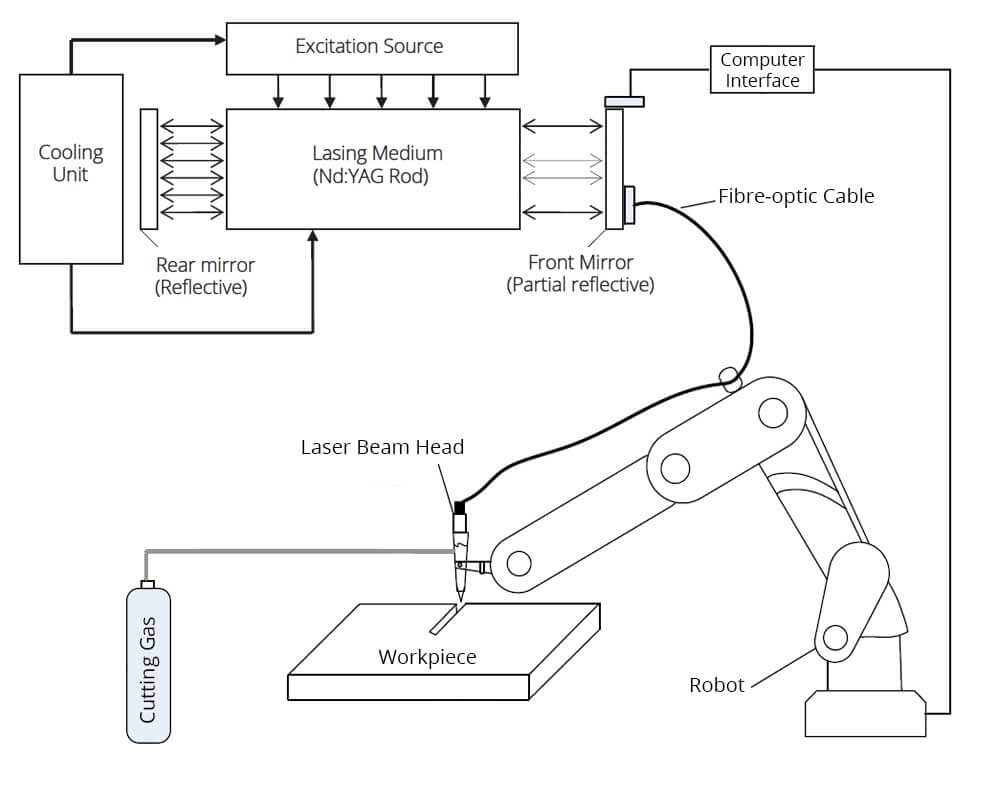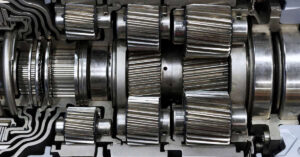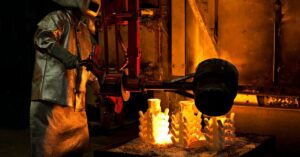Laser beam machining (LBM) is an advanced thermal-based machining process; the process is a non-contact type used in various industrial manufacturing applications for a wide range of materials. There are many different methods of cutting using lasers; each type is used to cut specific materials. Various laser cutting methods cut the materials by vaporization, melt and blow, melt blow and burn, thermal stress cracking, or reactive laser cutting.
LBM effectiveness depends on the material’s thermal properties and optical properties that will be machined rather than the mechanical properties. Therefore, materials that exhibit a high degree of brittleness or hardness and have low thermal diffusivity and conductivity are suitable for laser machining.
LBM is suitable for cutting geometrically complex workpieces and sheet metal. Various laser types are used for industrial machining; however, CO2 and Nd: YAG are the most common industrial laser types.
A combination of LBM process with multi-axis machining system or robot creating a hybrid system between the various operations; the hybrid system is used for drilling, cutting, grooving, welding, and heat-treating processes on a single machine.
Types of Laser
Nd: YAG and CO2 are the most commonly used laser type for LBM applications, among other lasers.
Co2 Laser
CO2 lasers have high average beam power, better efficiency, and good beam quality. The CO2 laser is ideal for cutting, boring, engraving applications, and fine cutting of sheet metal at high speed.
CO2 lasers provide various industrial cutting applications and are primarily used for several materials, including mild steel, aluminum, stainless steel, titanium, paper, wax, plastics, wood, and fabrics.
Neodymium (Nd)
The neodymium (Nd) and neodymium yttrium-aluminum-garnet (Nd: YAG) lasers have identical characteristics; however, the two types have different applications.
Nd: YAG lasers have low beam power that suits machining of thinner materials; however, during pulsed mode operation, it provides high powers on which enable it to machine thicker materials. Nd is suitable for boring processes and for applications where high energy and low repetition are required; The Nd: YAG laser, on the other hand, is ideal for very high power boring and engraving applications. YAG lasers are primarily used for cutting metals and ceramics.
Nd: YAG lasers have a shorter wavelength than CO2 lasers; hence, Nd: YAG lasers can be absorbed by high reflective materials that are difficult to machine by CO2 lasers.
Principle of Laser Beam Machining
An active laser medium absorbs energy from the excitation source. The energy absorption causes a changed density, and the active medium exited. The exited medium spontaneously emits a photon(s). By adjusting parallel mirrors, multiple reflectances of the light waves and amplification of the light occur, and the laser beam forms. The extraction of the aborting laser beam is in consequence of the partial reflection at the mirror.
The mechanism of material cutting during Laser Beam Machining occurs by focusing a high energy density laser beam on a workpiece that generates thermal energy. The workpiece absorbs the thermal energy, and the heat melts the workpiece material. Once the material is molten, it gets vaporized or chemically changed, and cutting the material takes place by removing the material through a high-pressure gas jet. The laser beam moves along the cutting line contour and continuously melts the material, the material blown from the kerf due to the high-pressure gas jet creating a narrow cut kerf.
Various methods of cutting using lasers; each method is suitable to cut specific materials and certain application, the methods are as follow:
Vaporization Cutting
The vaporization cutting process heats the material surface to the material boiling point, which generates a keyhole. The keyhole increases absorptivity and deepens the hole, and the material boils. The generated vapor erodes the molten walls and enlarges the hole further.
Vaporization cutting is suitable for cutting non-melting materials such as wood, carbon, and plastics.
Melt and Blow
Melt and blow cutting process heats the material to the melting point then blows the molten material from the cutting area using high-pressure gas, avoiding further raise of material’s temperature.
Since the process utilizes high-pressure gas to blows the molten material, the process greatly decreases the power consumption.
Melt and blow cutting is suitable for cutting metals.
Thermal Stress Cracking
Thermal Stress Cracking cutting is used with brittle materials that are sensitive to thermal fracture. The laser beam creates localized heating and thermal expansion on the material surface; the thermal expansion results in cracking the brittle materials, and the cutting progress with moving the laser beam.
Thermal Stress Cracking cutting is suitable for cutting glass.
Stealth Dicing
The stealth dicing cutting process focuses the laser beam inside the workpiece, which forms a modified microelectronic layer. A tape expander is used to separate the microelectronic chips.
Reactive Cutting
The reactive cutting process is similar to the oxy-cutting process, with the difference of using the laser beam as the source of ignition.
Reactive cutting is suitable for cutting carbon steel from thicknesses over 1 mm up to very high thicknesses.
Laser Beam Machining Applications
LBM has a wide range of applications in industrial sectors such as automobile, aerospace, electronics, and the nuclear industry, civil and construction industries, and medical industries.
In the Industrial sector, laser beam cutting is ideal for cutting stainless steel, a common material in the automobile industry. Besides, LBM is suitable for machining advanced high strength steels (AHSS), commonly used engineering material in the automobile industry, and boilers fabrication. LBM is practical and widely used in cutting titanium alloy sheets and nickel-base superalloys, widely used engineering materials in various aerospace applications. In addition to Aluminum alloys and other different engineering materials used in multiple industrial sectors.
In civil works and construction sectors, LBM is used in different civil applications to machine ceramic materials. LBM is ideal for cutting ceramic tiles cheaper and faster than the traditional cutting methods such as diamond-saw and water jetting. LBM is also very successful in cutting hard and brittle composite materials like marble, stone, and concrete. Glasses used in various civil structures and any other applications can be micro-machined by the laser beam.
In the medical sector, LBM can cut complex geometry in metallic coronary stents for various medical applications. CO2 laser cutting is used to manufacture small medical devices such as temporary stents, bone plates, patches, nails, and screws. CO2 laser milling is used for producing micro-cavities in bone and teeth tissues without damaging the soft tissues. Besides, LBM has various applications in cutting body tissues successfully.
In addition to cutting applications, CO2 and Nd / Nd: YAG lasers are also used for Laser beam welding (LBW).
Laser Beam Machining Advantages and Drawbacks
Laser Beam Machining Advantages
- LBM has no tools wearing problem as the process takes place without direct contact between the workpiece and the tool.
- LBM is suitable for machining metallic and non-metallic materials irrespective of their brittleness and hardness; the process can cut tough and abrasive materials; besides, LBM is also ideal for machining soft metals like plastics, rubber, and Sticky materials.
- LBM process is easy to control and configure based on job requirements.
- LBM provides high accuracy machining and cutting process; the cutting kerf from LBM remains too narrow and constant with minor tolerances.
- LBM is a low heating process; hence, material distortion is minimized.
- LBM is ideal for drilling micro-sized holes in difficult to machine materials.
- LBM is ideal for drilling precision deep holes of minimal diameter.
- The cutting surface roughness is low; thus, the workpiece does not require refinishing.
- The process is stress-less; therefore, cutting very fragile materials can be done without any support.
- LBM produces a high production rate as the cutting speed is high compared to similar machining processes.
Laser Beam Machining Drawbacks
- The initial cost of a laser machine is high, and the maintenance cost is relatively expensive.
- High power consumption process with relatively low efficiency.
- LBM can machine or drill limited thicknesses.
- Laser machining or cutting is a thermal process; hence, the process is not suitable for heat-sensitive materials.
- Laser beam machining has a low material removal rate.
- Safety procedures and precautions to be considered due to the associated risk during laser cutting operation.
Laser Beam Machining vs. Water Jet Cutting
| Comparison | Laser Beam Machining | Water Jet Cutting |
| Process uses | Cutting, welding, heat treating, cladding, vapor deposition, engraving, scribing, trimming, annealing, and shock hardening applications. | Cutting applications. |
| Multi-axes material cutting | Challenging due to the regulation of distance.
|
Partially possible.
|
| Range of Materials | Suitable to cut plastics, glass, wood, and all metals, excluding highly reflective metals.
|
Suitable to cut all materials. |
| Material combinations | Barely capable of cutting materials with different melting points. | Suitable to cut materials with different melting points; however, there is an associated risk of delamination. |
| Common applications | Cutting of flat sheet steel of medium thickness for sheet metal processing. | Cutting of stone, ceramics, and metals of greater thickness. |
| Cut surface appearance | The cut surface appears striated structure. | The cut surface appears with a rough profile. |
| Cutting edge parallelism | Good parallel edges with occasional formation of conical edges. | Good parallel edges with occasional formation of a “tailed” effect in thicker materials. |
| Degree of burring on the cut | Burring occurs partially. | No burring occurs |
| Thermal stress of the material | Deformation, tempering, and structural changes may occur in the material. | No thermal stress occurs.
|
Surface Treatment Using Laser Beam
The laser beam has various applications in the surface treatment of materials by changing its structure or composition to enhance properties and range of application.
The surface treatment that can perform using lasers are as follow:
- Re-melting.
- Transformation hardening.
- Surfacing.
- Alloying.
Re-melting
The laser remelting process occurs by heating the surface, melting it, and followed by quick cooling. Upon material solidification, metal crystallizes in more uniform and more refined than it used to be; hence, the process causes a considerable structure refinement.
The material properties change and improve with the remelting procedure, such as improvement in the degree of hardness or the corrosion resistance.
During remelting, additional material is added to enhance the edge layer properties of the material. Chromium, nickel, and titanium are usually added to produce a layer that is resistant to corrosion; carbides are also added to improve the material’s wear resistance.
Transformation Hardening
The laser hardening process occurs by heating the surface to a temperature above the austenitizing temperature and less than the melting temperature, followed by quick cooling, causing the carbon to release from the material structure and formation of material martensite structure; the process allows to configure the hardness to the required level.
Laser hardening use to locally harden workpieces without causing distortion. The hardness depth created by laser hardening lie between 0.4~1 mm; however, a greater hardness depth is attained through specific heat buildups.
Laser hardening is ideal for hardening parts that cannot be hardened with other procedures.
Surfacing
The laser surfacing process occurs when a filler is melted by a laser beam cover the workpiece surface and form a separate layer for protection purposes.
The process is suitable for coating (surfacing) components without causing distortion.
Alloying
The laser alloying process occurs by heating the surface, melting it with relatively low energy, and adding material into the melt through a nozzle. The additional material dissolves in the melt and forms thin layers.
Another alloying process is called dispersing. Dispersing, unlike alloying, uses more energy; thus, more material melts. Adding material into the melt also takes place through a nozzle; however, the additional material does not dissolve in the melt but forms a separate thin layer on the surface.
In general, whenever the melt and the fillers dissolve together and mix thoroughly, it is called alloying. On the other hand, whenever the fillers form a layer on the material without mixing, it is called dispersing.
References:
- International Journal of Machine Tools and Manufacture: Laser beam machining—A review.






